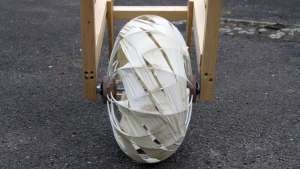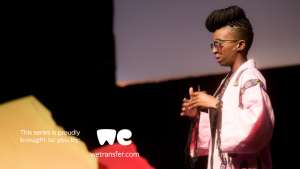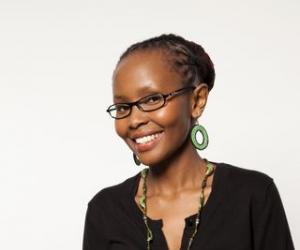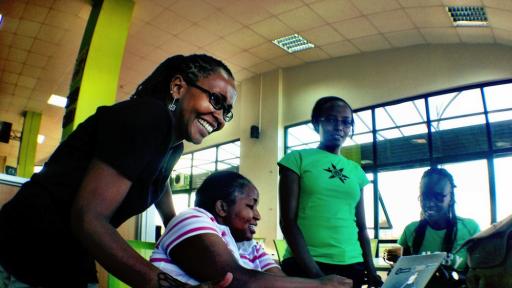When the story of Africa’s next vanguard of creativity and technology is told, Ushahidi will be at its epicentre. The Kenyan software and hardware company has grown organically from its origins just a few years ago as an information-mapping tool during the country’s 2008 post-election violence to become a catalyst for connectivity and collaboration across the length and breadth of the African continent.
Digital technology is playing a crucial role in Africa’s advancement, says Juliana Rotich, co-founder and executive director of Ushahidi, in her presentation at Design Indaba Conference 2014. The Sahara Desert has often been portrayed as a geo-physical barrier that cut off parts of Africa from the revolutions that happened in the rest of world. And while undersea fibre-optic cables have helped to bring Internet connectivity to the continent, they still mirror the old trade routes along the coastline.
What’s missing, says Rotich, is cross-border exchange: “There is great opportunity in interconnecting the insides of Africa, continuing to connect Africans to Africans, South Africa to Kenya, South Africa to Egypt, South Africa to Addis,” she tells the audience.
“This is the challenge and this is the last windmill to tilt at,” she says.
The flow of information
The first windmill that the Ushahidi team tilted at was information flow.
The Swahili word for “witness” or “testimony”, Ushahidi is a piece of free and open-source software that allows people to report and share information about what is going on where they are. Using any mobile device, they can contribute information from their area, which is then stored on a central ‘cloud’ and mapped using geo-location.
Our mission is to change the way information flows in the world, to give ordinary people a voice, says Erik Hersman, Ushahidi’s director of operations and strategy.
The software was created in response to the dearth of information after post-election fighting forced media houses to shut down in early 2008. “During that time we started to see reports of violence come in on our blogs,” director of technology development David Kobia tells the story. “Ushahidi was built in the very first week after the violence. It was a mash-up of information coming in from ordinary citizens, news reports, all plotted on a map.”
“We just did what we could. We didn’t realise it would have this much of an impact,” says Kobia.
The crowd-sourcing tool is now available in more than 30 languages, in more than 159 countries such as Haiti, Japan, Pakistan and Libya.
More recently, Ushahidi used its crowd-sourcing technology to ensure Kenya’s 2013 elections were free and fair. “Since our entire existence came out of the previous elections, we felt that it was our duty this time to be completely prepared for it,” says Kobia.
Leveraging technology in service of citizens
It wasn’t an easy journey for Rotich and her team. “When Ushahidi first started, Internet connectivity in Kenya was eight percent,” she relates.
It has been a long journey. It takes a team and it takes a community, Rotich says.
Sharing the tool was key to its growth. “We made the code open-source, available on ushahidi.com, which allows citizens to participate, to be part of the process, to say ‘I am here and this is what is going on’,” she says.
It grew into a disaster-response tool with wider applications further afield. During Ukraine’s turbulent political protests, Ushahidi was used to match those who needed assistance with those who could provide it. In March 2011, it helped Japanese citizens monitor the tsunami and nuclear crisis after the earthquake in Fukushima.
Rotich shares some key learnings from the start-up of Ushahidi:
1. Look local
The collective voices of citizens revolutionise the world, she says. “It is really important to look local, to ask what is going on,” she notes.
You can use this platform to tackle whatever issue you care about – environmental degradation, finding the best burger in Cape Town… the options for crowdsourcing are endless.
The question of scale – of expanding technology and products to more countries around the world – is often a burning question for technologists. “For us the biggest lesson in scaling was translation,” Rotich explains. “It was important to make sure the product was available in a language that people could connect to.”
To be able to scale, the Ushahidi software needed “to tap into users’ emotional language so that they could make it their own”. For it to be “not just Ushahidi from Kenya but Ushahidi that is relevant to the person and the issues they are dealing with”, the tool needed to be localised in other forms – for example, the script needed to be translatable into Arabic that reads from right to left.
2. Act lean
Starting up, Ushahidi ran a lean team of distributed members all over the world. “We often say as long as you are good and awesome, we don’t care where you live,” Rotich jokes. This has resulted in a healthy diversity of opinion and input that has made Ushahidi into a global organism.
3. Technology follows function
Rotich advises designers to use function to drive the technology. “It can help us to push the boundary of what is possible with technology,” she says.
She cites the example of the September 2013 attack at Nairobi’s Westgate Mall, which sparked the creation of the Ping app that allows small teams to check in with one another in a time of crisis. It is a new tool that Ushahidi has added to its platform.
4. Open the door for others
In 2010, when Ushahidi wanted to have a physical presence in Kenya, its members decided they didn’t want to have a regular office. So they opened up the first co-working space in Nairobi, which became the iHub.
“This goes back to Africa’s next vanguard: investing in creative networks and opening up the door for others to connect. iHub connected VC’s with entrepreneurs and it was a place where geeks could just be geeks,” Rotich says.
The space functions as a kind of “petri dish where people engage and collaborate and just laugh together and figure things out”.
It’s a physical space that functions as an incubator for other start-ups, a locus of creative energy and a training ground for the next generation of entrepreneurs.
We don’t want East Africa’s story to end with Ushahidi and M-Pesa, the popular mobile banking solution that has come out of the region, remarks Rotich.
Since its founding in 2010, spearheaded by Hersman and the team there, the iHub has grown to include 11,000 members and has incubated 48 start-ups in two years. The model has spawned other hubs all around Africa. “We’re very encouraged when we see this idea spreading around Africa. There are other hubs like iHub that have learned from its model,” says Rotich. “AfriLabs is the consortium that puts all these hubs together. It’s an Africa-wide network , a new ecosystem of technology.”
The story behind BRCK
Given the challenges to connectivity on the African continent, says Rotich, we need to “do what [we] can, with what [we] have, where [we] are”, she quotes Theodore Roosevelt.
In this setting, even the hardware we use in Africa needs to be revised.
After moving back to Kenya towards end of 2011 to focus on Ushahidi, she grappled with the electricity black-outs that still bedevil the country, making connecting to the Internet unreliable. On top of this is the high cost of making phone calls. So it’s a challenge connecting to other African countries.
We have a joke in Ushahidi that if it works in Africa, it will work anywhere.
The Ushahidi team began to ask itself if it couldn’t overcome this problem and reduce the cost of connection. “Could we leverage cloud-based technology to reduce the friction of going from one African country to another?” she asks.
The answer lay in redesigning the modem. “Modems are designed for societies with ubiquitous electricity and decades of existing infrastructure. Why aren’t we using technology that responds to our local context and our local problems?”
Ushahidi’s solution – called BRCK – is a rugged way to stay connected but it is also in essence a back-up generator for the Internet. When the electricity goes out, it can leverage 3G networks and it has 8-12 hours of battery life.
For our global team and other entreprenuers, the Internet is a utility – its like water, its what we live and breathe, says Rotich.
The Internet of things
One of the things the Ushahidi team has learned is that out of adversity can come new ideas and ways of doing things. BRCK presented not only a more adaptable way of staying connected, it can also connect sensors and information to responders – “the Internet of things”.
“What if you could use BRCK to send data remotely and ‘instrument’ something, for example turn on a light or a weather station, use it for CCTV?” she asks. BRCK is designed to connect with other sensors so that the user can send a command to perform a function.
Underlying Ushahidi’s work is the question, “What if solutions to the world’s problems came from Africa?”
There is huge potential for connectivity in Africa, where Internet penetration stands at 15.6 percent versus 42.9 percent in South America and 27.5 percent in Asia. And the link between increased connectivity and GDP has been established: a 10 percent increase in broadband corresponds to a 1.163 percent rise in GDP.
“Investment in technology, people and creative networks can help us to make sure that Africa’s next vanguard is something that we are part of,” says Rotich. “We are fostering and creating a new ecosystem, a new way of connecting African countries one to each other and a new way of being.”












